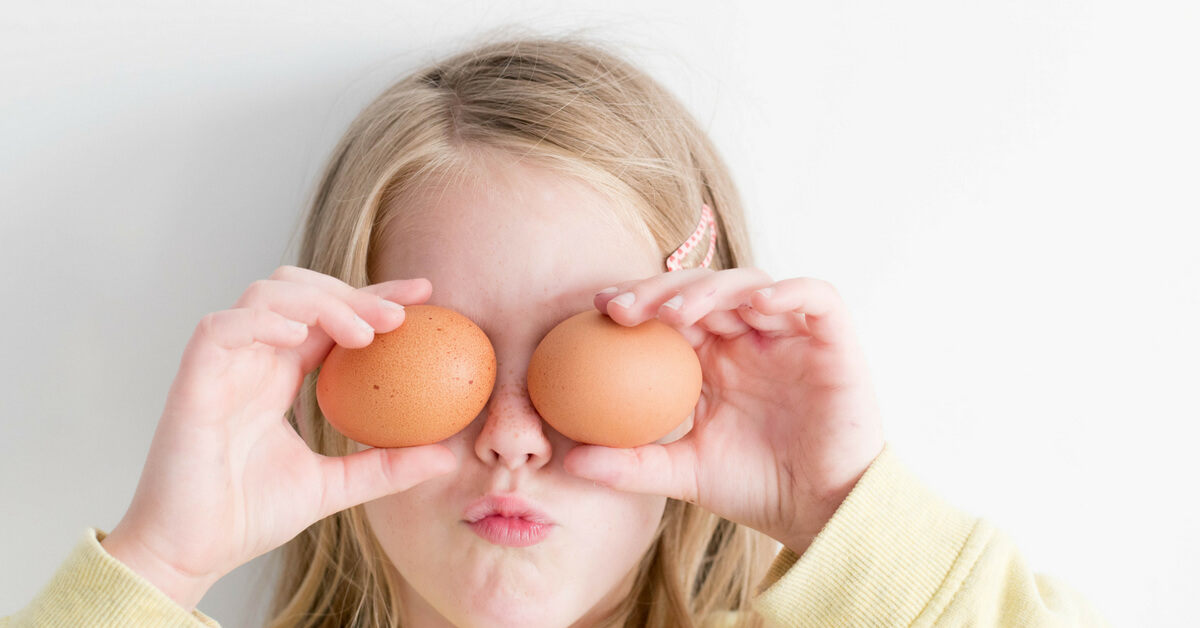By: Susan Joy
There are many people with egg allergies that could benefit from finding good healthy substitutes for eggs. It can be a challenge to find an egg replacement that isn’t a powdered processed product that comes in a package or plastic container.
An egg allergy causes the immune system to over react. The immune system mistakenly identifies certain egg proteins as harmful, then tells the immune system to release histamine and other chemicals that cause allergic signs and symptoms.
Eggs are used in most baked goods because the protein and fat in eggs add important components to a dish. There are different functions eggs perform in providing structure to a dish. They add moisture, leavening (to rise and give air), to bind, to help the texture, size and shape.
There are plenty of healthy, real food egg substitutes we can use when baking. The type of substitute may differ depending on if you are creating a sweet or savoury dish.
Let’s look at foods that work well as ‘Egg Substitutes’. Each is equivalent to 1 egg:
Chia seeds: 1 tablespoon of chia + 3 tablespoons of water, mixed well and allowed to sit for 10 minutes to form a gel. (If you don’t want to see little seeds in your recipe, grind the chia seeds down before adding the water). Chia doesn’t really have a flavour and can be used in savoury or sweet recipes. Use in puddings, jams, cakes, breads, brownies, cookies, stews and pizza bases. How does it work? Binds and thickens, plus adds moisture.
Golden flaxseed (finely ground): 1 tablespoon of flaxseed + 3 tablespoons of water, mixed well and allowed to sit for 10 minutes before using. It has a very slight nutty flavour and works well in breads, crackers, cookies, pizza bases, pastry and in meatloaf or meat patties. How does it work? It adds moisture, binds and leavens.
Psyllium Husks: 1 tablespoon of husks + 3 tablespoons water, mix and add straight into your recipe or you can add the husks with the dry ingredients and add the water with the other liquid. Psyllium has very little taste, use in baked goods like bread and to bind meat patties and rissoles. How does it work? It binds ingredients and is a leavening agent.
Gelatin (grass-fed): 1 tablespoon of gelatin + ¼ cup of water, allow to sit for 10 minutes. Gelatin doesn’t add any flavour and is good to use in pizza bases, muffins, scones and pancakes. How does it work? It binds ingredients together and gives a smooth texture, it also gives a slightly chewy texture.
Almond or Cashew Butter: ¼ cup of nut butter/spread. Almond butter adds a nutty flavour, cashew butter is a milder flavour. Nut butters work well in cookies, brownies, breads and pancakes. How does it work? It binds, gives moisture and texture.
Yoghurt: ¼ cup of natural yoghurt (use coconut yoghurt for dairy-free otherwise use Greek). Whisk before adding to the other ingredients. Yoghurt provides a delicious richer flavour to your recipe. It works best in breads, muffins, cakes and pastry recipes. (Yoghurt lacks leavening abilities, by adding ½ teaspoon of baking powder it will make up for this deficiency). How does it work? Adds moisture and helps to bind.
Vinegar and Baking Soda (bicarb): 1 teaspoon of baking soda (aka bicarbonate) + 1 tablespoon of white vinegar. Add in separately. Use in cakes, muffins, breads that don’t contain yeast. How does it work? Adds air and softness to cakes or bread.
Oil and Water: 2 tablespoons of mild flavoured olive oil + 1½ tablespoons of water + 2 teaspoons of baking powder (not baking soda aka bicarb). Use when your baking needs to rise well and have a lighter texture. Add in separately. How does it work? As a leavening agent and creates a soft and light texture.
Avocado: ¼ cup of mashed avocado. Works well in cakes, muffins and breads. Due to the oil content in avocado, cakes may brown quicker, you may like to reduce the oven temperature and cook longer. How does it work? Binds and creates a soft texture, which makes cakes less likely to crumble and helps them rise.
Pureed Fruit and Vegetables: ¼ cup of unsweetened, stewed apple or pear. ¼ cup of steamed pumpkin or sweet potato, chill before adding to recipe. Pitted prunes can also be used, they give a lovely fruity flavour. Use in sweet loaves, cakes, muffins, scones, brownies and cookies. How does it work? Adds moisture and binds.
Banana: ¼ cup of ripe mashed banana. Gives a sweet banana flavour so you may like to reduce the sweetener in your recipe. Works well in sweet breads, muffins, cakes and chewy baked goods, like brownies. How does it work? Adds moisture and binds.
Eggs become a very important factor when you need to bake with gluten-free ingredients. Gluten is the glue that binds the ingredients and eggs help replace that glue in baking but it becomes difficult when eggs need to be removed too. I hope these egg substitutes make life that little bit easier for you and you can enjoy your favourite baked goods without using eggs.
There maybe other reasons besides having an allergy that you may like to use an egg substitute. You may like to reduce the quantity of eggs in a recipe and replace a couple of the eggs with one or two of the ingredients above. Maybe your chickens aren’t laying at the moment, whatever the reason, have fun experimenting.
Article supplied with thanks to The JOYful Table.
About the Author: Susan is author of The JOYful Table cookbook containing gluten & grain free, and Paleo inspired recipes for good health and well being.

